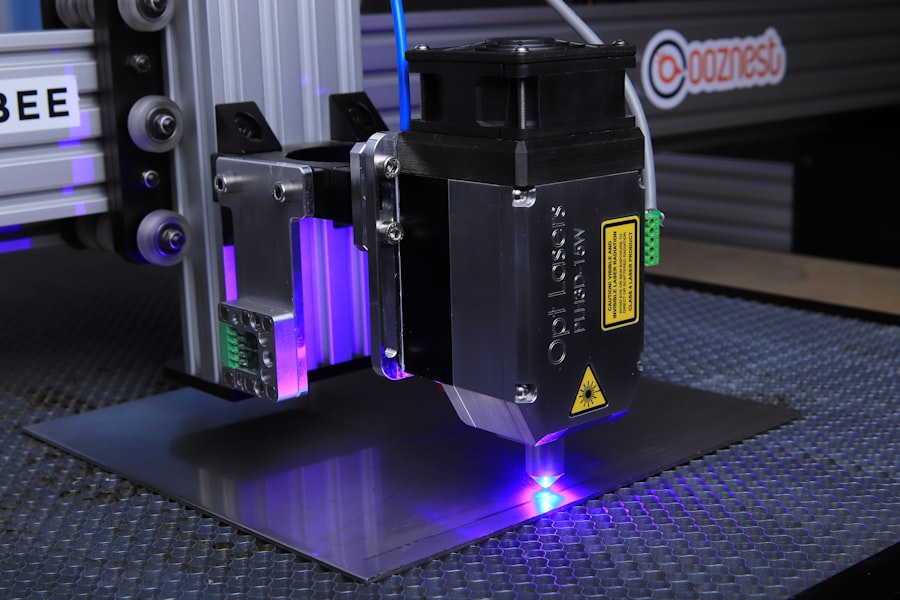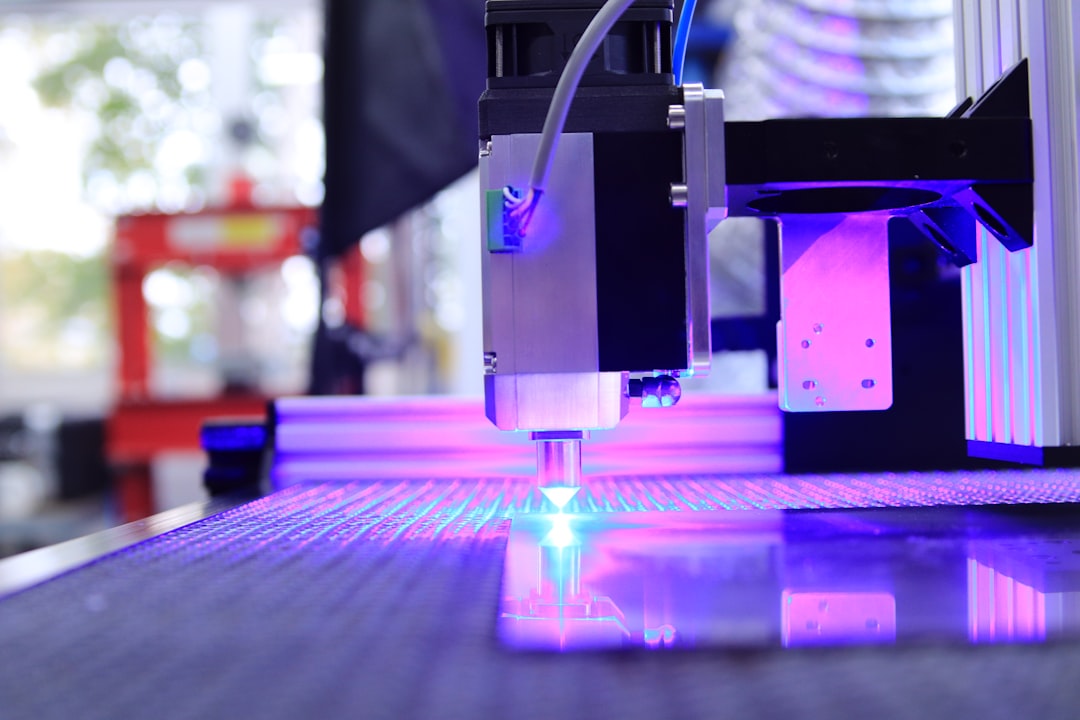Laser hair removal is a popular cosmetic procedure that uses a concentrated beam of light (laser) to remove unwanted hair. The laser targets the pigment in the hair follicles, heating them up and damaging the follicle to inhibit future hair growth. This process is effective in reducing and eventually eliminating hair growth in the treated area. It is important to note that laser hair removal is not a one-time treatment and typically requires multiple sessions to achieve the desired results. The procedure can be performed on various parts of the body, including the face, legs, arms, underarms, and bikini line.
Laser hair removal is a safe and effective method for long-term hair reduction. It is important to consult with a qualified and experienced provider to determine if you are a suitable candidate for the procedure. It is also essential to understand that laser hair removal works best on individuals with light skin and dark hair, as the contrast between the skin and hair color allows the laser to effectively target the hair follicles. However, advancements in technology have made it possible for individuals with darker skin tones to undergo laser hair removal with specialized lasers that are safe and effective for their skin type.
Key Takeaways
- Laser hair removal uses concentrated light to target and destroy hair follicles, leading to permanent hair reduction.
- It is important to consider skin tone when undergoing laser hair removal, as certain lasers are more effective and safer for darker skin tones.
- Laser hair removal is generally safe for African American skin when performed by a qualified and experienced provider using the appropriate equipment.
- Potential risks and side effects of laser hair removal may include skin irritation, redness, and changes in skin pigmentation.
- Before undergoing laser hair removal, it is important to avoid sun exposure, waxing, and plucking to ensure the best results.
The Importance of Considering Skin Tone
When considering laser hair removal, it is crucial to take into account your skin tone. The Fitzpatrick scale is often used to classify skin types based on their reaction to sun exposure and their likelihood of developing a sunburn. Individuals with lighter skin tones (Fitzpatrick types I-III) tend to have better results with laser hair removal due to the higher contrast between their skin and hair color. This allows the laser to effectively target the hair follicles without causing damage to the surrounding skin.
On the other hand, individuals with darker skin tones (Fitzpatrick types IV-VI) have higher levels of melanin in their skin, which can make it more challenging for traditional laser hair removal methods to differentiate between the pigment in the skin and the hair follicles. This can increase the risk of potential side effects such as burns, hyperpigmentation, and scarring. However, with advancements in laser technology, there are now specialized lasers that are safe and effective for individuals with darker skin tones, allowing them to undergo laser hair removal with reduced risk of adverse effects.
Safety of Laser Hair Removal for African American Skin
African American skin is rich in melanin, which provides natural protection against the sun’s harmful UV rays. However, when it comes to laser hair removal, the high levels of melanin in darker skin tones can pose a challenge. Traditional laser hair removal methods may not be suitable for African American skin due to the risk of burns, hyperpigmentation, and scarring. It is essential for individuals with darker skin tones to seek out providers who have experience and expertise in treating African American skin with specialized lasers that are safe and effective for their skin type.
Advancements in laser technology have led to the development of specialized lasers that are specifically designed to target the hair follicles while minimizing the risk of damage to the surrounding skin. These lasers are equipped with longer wavelengths that can bypass the melanin in the skin and focus on the pigment in the hair follicles. This reduces the risk of adverse effects and makes laser hair removal a viable option for individuals with African American skin. It is important for individuals with darker skin tones to do thorough research and seek out qualified providers who have experience working with diverse skin types to ensure a safe and effective treatment.
Potential Risks and Side Effects
| Category | Potential Risks and Side Effects |
|---|---|
| Physical | Headache, nausea, dizziness, fatigue |
| Psychological | Anxiety, depression, mood swings |
| Long-term | Organ damage, addiction, withdrawal symptoms |
While laser hair removal is generally considered safe, there are potential risks and side effects that individuals should be aware of before undergoing treatment. Common side effects may include redness, swelling, and mild discomfort in the treated area, which typically subside within a few hours to a few days. In some cases, individuals may experience temporary changes in skin pigmentation, such as lightening or darkening of the skin, which usually resolves on its own over time.
For individuals with darker skin tones, there is a higher risk of potential side effects such as burns, hyperpigmentation, and scarring if traditional laser hair removal methods are used. This is why it is crucial for individuals with African American skin to seek out providers who have experience working with diverse skin types and utilize specialized lasers that are safe and effective for darker skin tones. By choosing a qualified provider who understands the unique needs of African American skin, individuals can minimize the risk of adverse effects and achieve successful outcomes with laser hair removal.
Preparing for Laser Hair Removal
Before undergoing laser hair removal, there are several steps that individuals can take to prepare for their treatment. It is important to avoid sun exposure and tanning beds for at least six weeks prior to treatment, as tanned skin can increase the risk of potential side effects such as burns and changes in pigmentation. Additionally, it is recommended to avoid plucking, waxing, or electrolysis for several weeks before treatment, as these methods can disrupt the hair follicles and interfere with the effectiveness of laser hair removal.
Individuals should also shave the treatment area prior to their appointment, as the laser targets the pigment in the hair follicles beneath the surface of the skin. This allows the laser to effectively target the hair follicles without interference from surface hair. It is important to follow any specific instructions provided by your provider to ensure optimal results from your laser hair removal treatment. By taking these preparatory steps, individuals can help ensure a successful and effective treatment with minimal risk of adverse effects.
Aftercare and Maintenance

After undergoing laser hair removal, it is important to follow proper aftercare guidelines to promote healing and minimize potential side effects. It is normal to experience some redness and swelling in the treated area, which typically subsides within a few hours to a few days. It is important to avoid sun exposure and tanning beds for several weeks following treatment, as the skin may be more sensitive and prone to damage from UV rays.
It is also recommended to keep the treated area clean and moisturized to promote healing and reduce any discomfort. Avoiding hot showers, saunas, and strenuous exercise for a few days after treatment can help minimize irritation and promote optimal healing. It is important to follow any specific aftercare instructions provided by your provider to ensure a smooth recovery and successful outcomes from your laser hair removal treatment.
In terms of maintenance, individuals may require multiple sessions of laser hair removal to achieve optimal results. This is because hair grows in different cycles, and not all follicles are actively growing at the same time. By undergoing multiple sessions spaced several weeks apart, individuals can target all stages of hair growth and achieve long-term reduction in hair growth in the treated area. It is important to follow up with your provider for any recommended maintenance sessions to maintain your results over time.
Finding a Qualified Provider
When considering laser hair removal, it is crucial to find a qualified provider who has experience working with diverse skin types, including African American skin. It is important to research potential providers and inquire about their experience and expertise in treating darker skin tones with specialized lasers that are safe and effective for African American skin. Look for providers who have a track record of successful outcomes with diverse clientele and who prioritize safety and patient satisfaction.
It is also recommended to schedule consultations with potential providers to discuss your goals, concerns, and expectations for laser hair removal. This allows you to assess their level of knowledge and expertise while also getting a feel for their approach and bedside manner. During your consultation, be sure to ask about their experience working with African American skin and inquire about any before-and-after photos or testimonials from previous clients with similar skin types.
By taking the time to find a qualified provider who understands the unique needs of African American skin, individuals can feel confident in their decision to undergo laser hair removal and achieve successful outcomes with minimal risk of adverse effects. A qualified provider will prioritize safety, efficacy, and patient satisfaction while tailoring their approach to meet the specific needs of each individual client.
If you’re considering laser hair removal for all skin tones, including African American skin, it’s important to choose a reputable provider with the right technology. In a recent review of laser hair removal at the Paragon Medspa in Mansfield, Texas, the author highlights the effectiveness of the treatment for diverse skin tones. This aligns with the findings of a study by Dr. Ghada Afifi in Newport Beach, who discusses the best type of laser hair removal machine for different skin types. To learn more about the latest advancements in laser hair removal technology and find the best treatment for your skin tone, check out this informative article on inlaserhairremoval.com.
FAQs
What is laser hair removal?
Laser hair removal is a cosmetic procedure that uses a concentrated beam of light (laser) to remove unwanted hair. The laser targets the pigment in the hair follicle, damaging the follicle and inhibiting future hair growth.
Is laser hair removal safe for all skin tones?
Yes, advancements in laser technology have made it possible for individuals with all skin tones, including African American skin, to safely undergo laser hair removal. It is important to seek out a qualified and experienced practitioner who uses appropriate equipment for darker skin tones.
Are there specific lasers designed for darker skin tones?
Yes, there are specific types of lasers, such as Nd:YAG and diode lasers, that are considered safer for darker skin tones. These lasers are able to target the hair follicle without causing damage to the surrounding skin.
What are the potential risks for laser hair removal on darker skin tones?
The main risk for individuals with darker skin tones is the potential for skin discoloration or burns if the wrong type of laser is used. It is crucial to consult with a skilled professional who has experience working with darker skin tones to minimize these risks.
How many sessions are typically needed for laser hair removal on darker skin tones?
The number of sessions needed for laser hair removal can vary depending on the individual and the area being treated. On average, individuals with darker skin tones may require more sessions compared to those with lighter skin tones due to the nature of their hair and skin.
What areas of the body can be treated with laser hair removal for darker skin tones?
Laser hair removal can be performed on various areas of the body, including the face, legs, arms, underarms, bikini line, and back. It is important to discuss your specific treatment areas with a qualified practitioner to determine the best approach for your individual needs.






